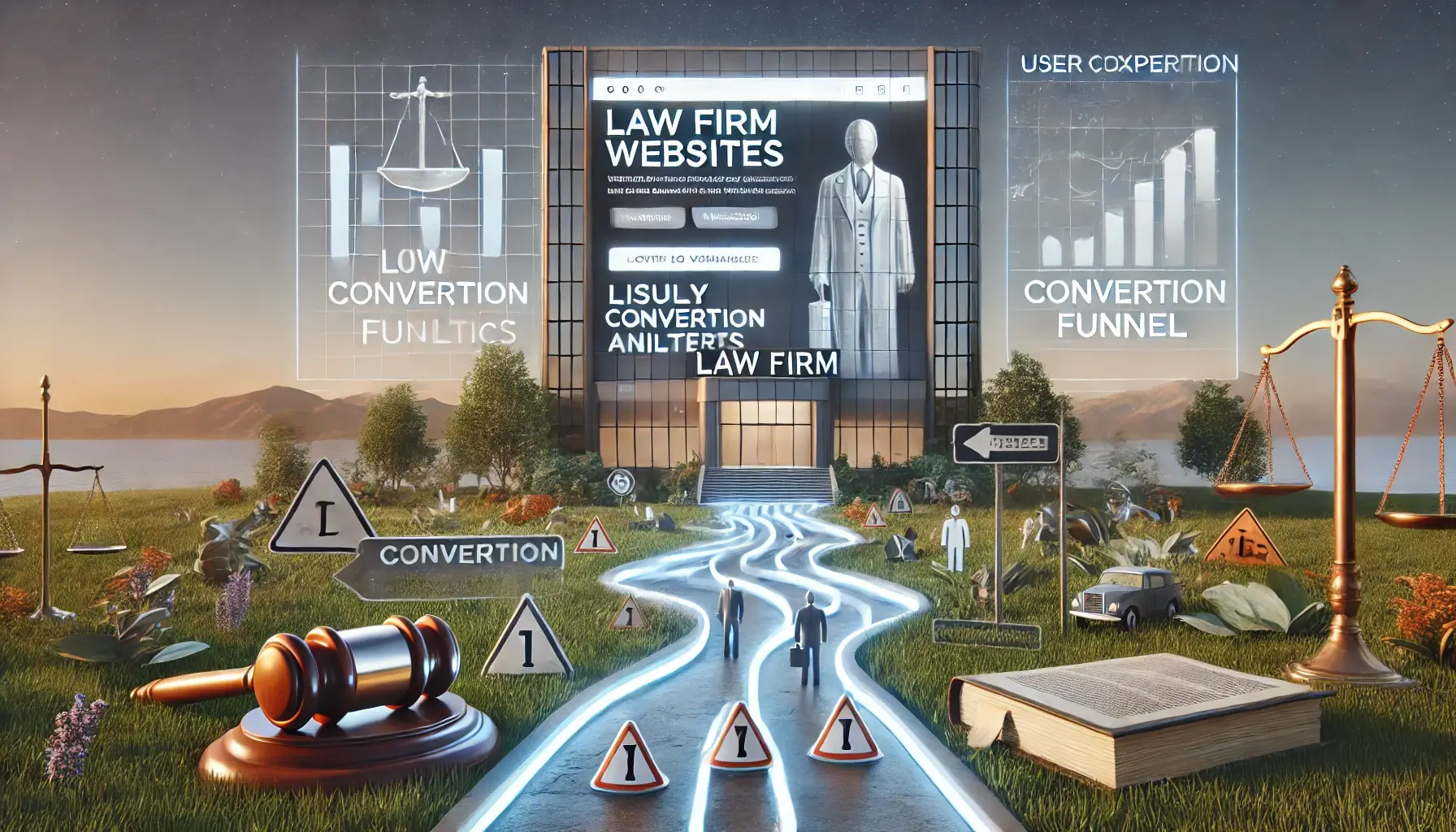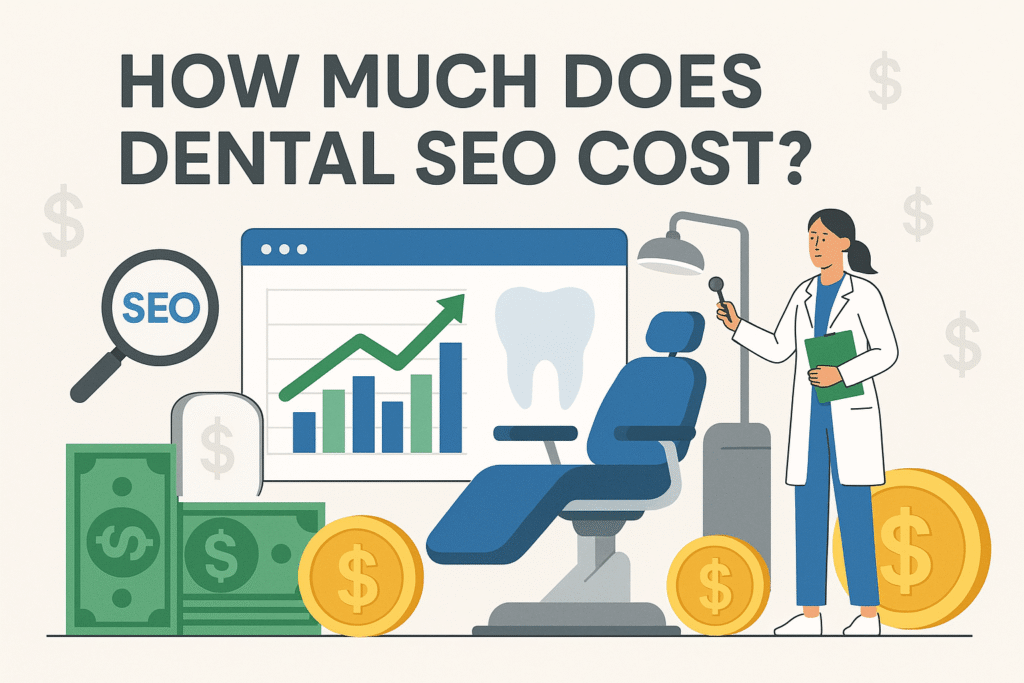Most solicitor websites in the UK look the part — sleek design, polished branding, legal jargon in the right places. But beneath the surface, they fail at a crucial job: turning website visitors into paying clients.
If your homepage isn’t generating phone calls, contact form submissions, or consultation bookings, the issue likely isn’t traffic — it’s conversion.
Many firms invest heavily in SEO, only to see minimal results because the homepage doesn’t guide the user towards action. The problem isn’t visibility — it’s usability.
This article explains why most law firm homepages fail to convert, what today’s legal clients expect, and how a few targeted changes can stop leads from slipping through the cracks. If your site ranks but doesn’t generate enquiries, this is where to start.
Want to fix visibility first? See our Law Firm SEO Manchester service page.
What Does Conversion Mean for a Solicitor Homepage?
A conversion on a law firm homepage means a visitor takes a meaningful step towards becoming a client. The most common conversion actions for UK-based solicitor sites include:
- Submitting a contact or enquiry form
- Calling the firm directly via mobile
- Starting a live chat session
- Booking a free consultation
- Downloading a legal guide or case checklist
Visitor Intent Matters
People landing on a solicitor’s homepage are rarely browsing. They’re usually in one of two states:
- Urgency-led: Facing a legal issue and ready to act
- Trust-seeking: Comparing firms and looking for credibility
A homepage that doesn’t speak directly to either of these groups — through layout, language or functionality — misses the moment.
For example, if someone searches “family solicitor Manchester” and lands on your homepage, they should immediately see:
- A clear mention of family law services
- A short sentence showing expertise or success rate
- A prominent contact button or phone number
- Trust signals (e.g. reviews, accreditations, years of experience)
For guidance on aligning homepage copy with client search intent, read our Content Strategy for Law Firms blog.
Why Most Law Firm Homepages Fail to Convert?
The majority of law firm homepages in the UK fail to convert because they are built to impress, not to guide. A visitor arrives, but the page gives them too little direction, too much legal jargon, or no reason to trust the firm.
Here are the five most common reasons solicitor homepages lose leads:
1. Poor or Hidden Calls to Action
Many law firm sites place the main call to action far down the page or use vague terms like “Learn More” or “Get Started”. If someone is ready to act, they should see a clear prompt — such as “Book a Consultation” or “Speak to a Solicitor” — in the first screen without scrolling.
A lack of mobile-friendly CTAs also damages conversion. Over 60% of legal service traffic comes from mobile devices in the UK. A static button or non-clickable phone number costs enquiries.
2. No Trust Signals
People rarely contact a solicitor without seeing evidence of credibility. If your homepage doesn’t show reviews, case results, accreditations or solicitor profiles, visitors leave and check competitors who do.
Displaying local testimonials, professional memberships (such as the Law Society or SRA registration), and years of experience builds immediate confidence.
If you’re unsure what qualifies as a trust signal, we break it down in our Local SEO for Solicitors guide.
3. Slow Loading or Poor Mobile Experience
A homepage that takes longer than three seconds to load increases bounce rates dramatically. Visitors won’t wait — especially those using mobile data or searching in a rush.
Common issues include oversized images, uncompressed scripts, and poor hosting. These can be resolved quickly with proper technical SEO. If you’re seeing low conversions despite good traffic, a technical audit is essential.
Visit our Technical SEO for Solicitors resource to understand the technical gaps that often block conversions.
4. Unclear Messaging or Legal Jargon
Legal websites often sound like case summaries — written for peers, not clients. Most visitors aren’t lawyers. They’re people under stress, looking for reassurance and clear next steps.
If your homepage headline talks about “bespoke litigation strategy” instead of “helping you resolve legal issues quickly”, it fails to connect. Focus on benefits, not features.
5. No Visual or Navigational Hierarchy
Homepages that try to say everything at once end up saying nothing clearly. Without visual hierarchy — bold headings, section dividers, and logical flow — users get overwhelmed and click away.
Key services, contact options and trust indicators must be positioned in a natural sequence. If your homepage just lists “About Us” and “Services” with no user flow, it won’t convert.
We’ve explained how these homepage structure issues relate to search visibility in our Why Your Manchester Business Dropped in Google Rankings blog — but the same logic applies to user behaviour.
What Modern Legal Clients Expect From Your Homepage?
Visitors who land on a solicitor’s homepage aren’t there to browse. They’re task-oriented. They want answers, proof, and action — fast. If your homepage doesn’t meet these expectations in under 10 seconds, most users leave and contact a competitor.
Here’s what users now expect from a law firm homepage in 2025:
1. Immediate Clarity About Services
The homepage must confirm instantly whether the firm handles the visitor’s specific issue — family, property, personal injury, or immigration law. A clear headline such as “Specialist Family Solicitors in Manchester” outperforms vague slogans every time.
Confusion at this stage leads to high bounce rates and wasted traffic.
2. Evidence of Trust and Credibility
Today’s clients expect more than a logo and address. They look for:
- Verified Google reviews
- Memberships like the Law Society or Lexcel
- Case studies or results
- Real solicitor profiles with photos
Social proof is no longer optional. It’s a conversion trigger. Without it, even well-ranked websites struggle to get enquiries.
Our article on Content Strategy for Law Firms explains how trust elements in content increase engagement and time on page.
3. Fast Access to Contact Options
Whether it’s a phone call, live chat, or simple contact form, the user expects to act without navigating to another page. The top-right corner and above-the-fold areas should always contain a visible contact method.
If they have to scroll or click “Contact Us” just to find a phone number, you’ve lost momentum.
4. Mobile-First Design
More than half of all legal website traffic in the UK now comes from mobile. That means:
- Buttons must be easy to tap
- Fonts must be readable without zooming
- Forms must auto-fill and work without errors
- No pop-ups that block essential information
A mobile-first homepage isn’t just good UX — it’s essential for SEO and user retention.
5. Language That Reflects Legal Problems, Not Legal Terms
People search for “help with child custody” — not “family law proceedings under Section 8”. Your homepage copy needs to mirror what clients actually type into Google.
If your language feels distant or academic, users won’t feel understood. That emotional disconnect results in no action.
We’ve detailed how aligning site content with user search terms can lift rankings and conversions in our Complete SEO Guide for Solicitors.
How to Quickly Spot If Your Homepage Is Losing Leads?
If your homepage isn’t converting visitors into enquiries, you don’t need to guess why. A simple audit can reveal the weak points — and most take minutes to spot.
Below is a checklist solicitors can use to evaluate homepage performance:
Homepage CRO Audit: 5 Quick Checks
- Is the main call to action visible without scrolling?
If your “Contact Us” or “Book a Consultation” button is buried, users won’t find it. - Does the headline clearly state your services and location?
A vague headline like “Legal Solutions You Can Trust” won’t tell users what you actually do. - Are there visible trust signals above the fold?
Include star ratings, accreditations, or “Trusted by 500+ Manchester clients” to build instant trust. - Is the mobile version fast and functional?
Test your homepage on a phone. If the menu is hard to tap or the form doesn’t work, you’re losing mobile traffic. - Does the homepage answer what the client is likely searching for?
Make sure it reflects client problems, not internal legal terms. For example, say “We help with contested wills” not “We specialise in probate disputes.”
You can also track user behaviour using tools like:
- Google Analytics 4: Measure bounce rate, session duration, and exit points.
- Microsoft Clarity: See real user click patterns and scroll depth.
- Hotjar: Identify rage clicks and where users abandon the page.
If you notice that traffic is high but enquiries are flat, a CRO issue is almost always the cause.
Our blog on Why Your Manchester Business Dropped in Google Rankings explains how poor engagement metrics affect both SEO and lead flow — especially for local firms.
Ready to Turn Your Homepage into a Legal Lead Engine?
If your homepage ranks but doesn’t convert, you’re not alone — but it’s fixable. With a few targeted changes, your site can become your best-performing source of new enquiries.
At MCR SEO Pro, we help Manchester-based law firms fix homepage issues that block leads. Whether it’s improving your call to action, refining your message, or optimising page speed, we apply proven CRO techniques backed by user data — not guesswork.
You don’t need a full redesign. You need a homepage that guides the right people to take the right action. Book a free homepage audit and discover where you’re losing leads — and how to fix it.
Start here: Law Firm SEO Manchester





